10 Essential Chamber Pop Albums
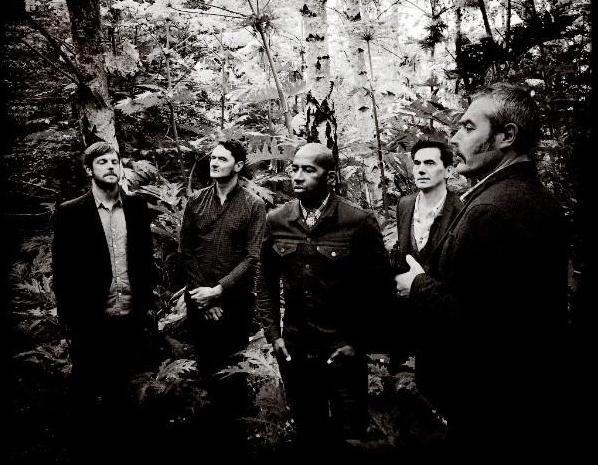
Today is the first day of fall, and as such it demands changing our behavior to reflect the season. It’s still pretty warm right now, but in time we’ll be trading our jersey tees for fuzzy sweaters and cozying up indoors rather than allowing our body heat to radiate outward on the beach. Naturally, our musical habits will change (a little) as well. And when we think fall, we think of highbrow music. In other words: Chamber pop. An over-correction to both the distortion fuzz and lo-fi tape hiss of the early ’90s, chamber pop emerged as a kind of sophisticated alternative to indie’s less aesthetically elegant characteristics. It’s influenced heavily by a number of key artists, namely Brian Wilson and Van Dyke Parks’ most ambitious Beach Boys recordings (you’ll see them referenced repeatedly below) as well as Burt Bacharach, Scott Walker and Lee Hazlewood. And though the results vary, the sound invariably involves more elaborate arrangements than the typical rock song—lots of piano, usually strings or horns, perhaps even dulcimers, chamberlin or vibraphone. As we await the changing of colors and a chill in the air, let’s turn to some of the prettiest albums of the past 25 years. There are more greats where these came from, but it’s a start; here are 10 essential chamber pop albums.
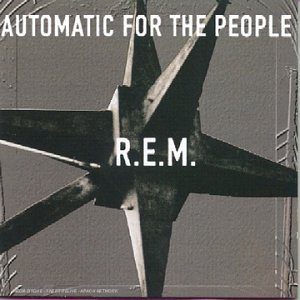 R.E.M. – Automatic for the People
R.E.M. – Automatic for the People
(1992; Warner Bros.)
The Athens, Georgia quartet’s first album of the 1990s, Out of Time, was a brave but messy collection of feedback-laden folk and slightly stilted pop experiments, ranging from Michael Stipe’s mad poetics to missteps from guests like Kate Pierson and KRS-One to, well, “Losing My Religion.” No less an authority figure than Led Zeppelin’s John Paul Jones helped refocus their plush arrangements and fit them in and around elements of their plangent rock. The results on the next album included measured takes like “Find the River,” “Drive,” and the loss anthems “Nightswimming” (driven only by oboe and Mike Mills on piano) and “Everybody Hurts.” Buttressed by the classy energy of “The Sidewinder Sleeps Tonite” and “Man on the Moon,” Automatic for the People places the band at the height of their emotional power—growing out of post-punk desperation, growing up, growing into more somber and majestic drama. – Adam Blyweiss
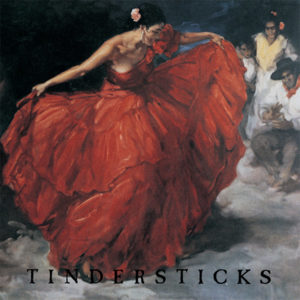 Tindersticks – Tindersticks (I)
Tindersticks – Tindersticks (I)
(1993; London)
When the stars of Britpop zigged, Tindersticks zagged. Counter to the Bowie-, Smiths- and Beatles-worship happening on records by Suede and Blur, this Nottingham-based band assembled as a string-laden ensemble with a jones for the dark poetry of Cave and Cohen, and the lush arrangements of ’60s-era Scott Walker (which, to be fair, Pulp had too). The band released two self-titled albums in a row, both of which are essentials, mind, but their debut is arguably the strongest statement they’ve released to date, a pure distillation of their elegance and songwriting into an expansive 21-track collection of brilliantly beautiful dirges and gilded pop. Yet for every gorgeous and hook-driven track such as “Nectar” or “City Sickness,” there’s an ominous rumble in “Tyed” or “Whiskey & Water,” which suggests they were always more inclined to go Bad Seeds than Beatles. – Jeff Terich
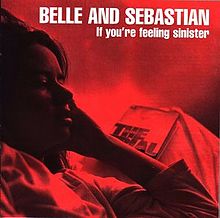 Belle and Sebastian – If You’re Feeling Sinister
Belle and Sebastian – If You’re Feeling Sinister
(1996; The Enclave/Jeepster)
Belle and Sebastian mastermind Stuart Murdoch penned most of If You’re Feeling Sinister after retreating to Glasgow while suffering from an isolating case of chronic fatigue in his early 20s. His social detachment would lyrically spawn a world of lonerism beautifully illustrated through whimsical characters and fantasies of normalcy; beautiful track stars, a boy on a bike, kinky Christians. Musically, the tracks on the Scottish collective’s second album are foundationally constructed throughout, as each song masterfully introduces instruments at the start of new movements with delicacy and tact. Variability across the span of the album never sacrifices stylistic cohesion, as the landmark release truly exists as a sonic entity and extension of Murdoch’s hermetic perspective. The tracks on If You’re Feeling Sinister find the songwriter crafting said personas of fictional realism through a highly introspective lens. By combining a Smiths-like wistfulness and a childlike ingenuity, If You’re Feeling Sinister provides a reflective backdrop of the human condition as observed by someone lingering on a city’s social outskirts. – Patrick Pilch
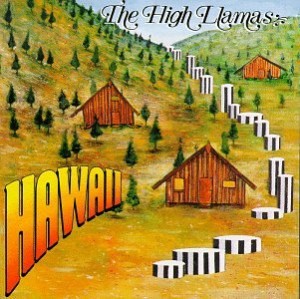 The High Llamas – Hawaii
The High Llamas – Hawaii
(1997; V2/Alpaca Park)
No album on this list cites Pet Sounds or SMiLE as brazenly as The High Llamas’ Hawaii. The tribute was so obvious that it spurred adjunct Beach Boy Bruce Johnston to call Sean O’Hagan out to California to discuss a potential collaboration on a new project that never happened, primarily because Brian Wilson was difficult to excite and (say it together) Mike Love scuttled the whole idea. For all its precise pastiche, Hawaii is still a maverick work existing entirely on its own. O’Hagan borrows more from Burt Bacharach for pop jewels like “Nomads” and “Dressing Up the Old Dakota.” Especially in Hawaii’s many instrumental interstitials he forces a gentle collision between orchestration and electronics, possibly something he picked up in Stereolab. Hawaii hangs together as a unified suite of beautiful ideas, from the banjo-and-Farfisa quotes of “Sparkle Up” to the piano-driven “Ill-Fitting Suits” and “Theatreland.” As if that weren’t enough there’s also a thinly annotated, very abstract lyrical narrative about the colonization and Americanization of Hawaii that’s fun to figure out, if you’re that kind of proactive researcher. That concept might be the most twee idea in rock history, but the High Llamas execute Hawaii with so much expertise and wonder that you don’t notice it. – Paul Pearson
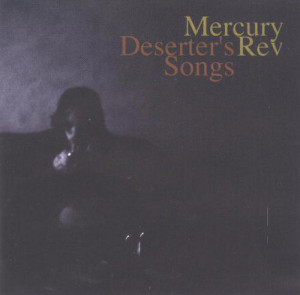 Mercury Rev – Deserters’ Songs
Mercury Rev – Deserters’ Songs
(1998; V2)
You’d think there was a clearance sale on singing saws at Guitar Center in the late ’90s, given how frequently they seemed to come up in indie records. About six months after Neutral Milk Hotel made the case for the saw’s place in weirdo pop music, Mercury Rev delivered Deserters’ Songs, a lush and gorgeous album of pop beautifully arranged with triumphant strings, stunning horn sections—and, of course, singing saw. But where Mercury Rev were, prior to this album, very much a guitar band in the same vein as neo-psych peers The Flaming Lips, here they sought a bigger sound via a wide variety of instruments and approaches, at times recalling the emotional grandeur of Pet Sounds (“Tonight It Shows”) while at others finding a more organic space within their tried-and-true psychedelia (“Goddess on a Hiway”). There’s even some glorious saxophone cheese on “Hudson Line,” for good measure, showing that in the right hands, even the corniest sounds can end up being impossibly cool. – Jeff Terich
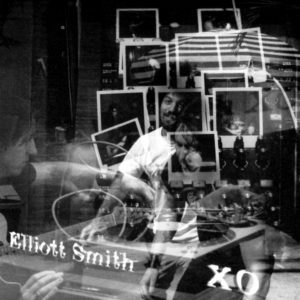 Elliott Smith – XO
Elliott Smith – XO
(1998; Dreamworks)
Released just a year after the relatively stripped-down lo-fi sound of indie masterpiece either/or, Elliott Smith’s fourth album XO found the Portland singer/songwriter embracing big sounds that only a major label budget could provide. As with most of his albums, a good bulk of the instruments on XO are played by Smith himself, but in addition to his own musical proficiency the album boasts a string octet, three horn players, a couple of studio drummers and some patented Jon Brion chamberlin. When applied to Smith’s already intricate melodies, the expanded repertoire turns the album into a lush orchestral wonderland on the level of Pet Sounds or Odessey and Oracle. There are layers upon layers within highlights such as “Bled White” or “Bottle Up and Explode,” which are ultimately accessible pop songs given an expressive dressing. But Smith was frequently at his best without much help at all, for that matter, and a stark (yet nicely multi-tracked) song like “Tomorrow, Tomorrow” is proof that all the extra elements aren’t necessary for this album to be as good as it is. But, boy, do they make it into that much more of a sublime, immersive headphone experience. – Jeff Terich
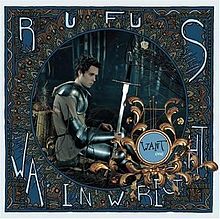 Rufus Wainwright – Want One
Rufus Wainwright – Want One
(2003; Dreamworks)
His 1998 solo debut probably falls more in line with the more restrained ideals of chamber pop, but Rufus Wainwright’s defining work remains his emotionally exacting opus Want One five years after. On a surface level it perfectly catches an outsider’s expulsion from the pop zeitgeist of 2003, riveted with unflinching introspection and sometimes brutal account-settling. As befits Wainwright’s melodramatic style it’s loaded with equal parts orchestral beauty and hammering climaxes. Right at the top “Oh What a World” expresses mimicked amazement at new standards of sophistication and constant motion while direct cops from Ravel’s “Bolero” keep its pulse. “I Don’t Know What It Is” is still Rufus’ most perfect song, in which he grasps for direction while contending with mental references to the sitcom Three’s Company. In fact Want One’s cultural citations plant it firmly in the mold of chamber pop: Modernity is his lure and his foil at the same time. Wainwright plays off modern and historical high and pop culture to make up his road map (“Movies of Myself,” “Vibrate,” “11:11”), then sticks around for the painful emotional deconstructions (“Go or Go Ahead,” “Dinner at Eight”). Sometimes he veers away from his quietly effete moments of piano- and string-laden beauty—“Go or Go Ahead” is almost arena rock—but the huge range of ambition and sounds that comprise Want One all coalesce behind Wainwright’s earthy, still-pure vocals and his unmatched gift for melody. – Paul Pearson
 Destroyer – Destroyer’s Rubies
Destroyer – Destroyer’s Rubies
(2006; Merge)
All of Dan Bejar’s albums have some element of ornate, art rock grandeur about them, but they often get there through different means: Glam riffs on Streethawk: A Seduction, synthesizers on Your Blues, sophisti-pop smoothness on Kaputt. The album of Bejar’s that boasts the fanciful arrangements to match his own intricate Cliff’s-Notes-worthy narratives, however, is Destroyer’s Rubies, because of course it’s the one that’s named after a gemstone. Compared to some of the other albums on this list, it’s not necessarily as intense on big string arrangements (though there is a lyrical nod to Incredible String Band), but for what’s mostly a guitar album, what stands out most—aside from the labynthine lyrical content—is the piano, baritone saxophone, vibraphone and trumpet, which turn an already strong set of rock music into something utterly sublime. When a flurry of descending piano licks cascade after Bejar sneers, “her father…the fucking maniac!“, it sounds like the most sumptuous thing ever put to tape. – Jeff Terich
 Grizzly Bear – Veckatimest
Grizzly Bear – Veckatimest
(2009; Warp)
Veckatimest was a landmark exploration of the changing landscapes of pop in 2009, and by this point, it’s become somewhat of a watershed album. Dreamy and swelling with complex instrumentation and daring and layered composition, Veckatimest represented Grizzly Bear’s focal efforts to create a sort of abridged conclusion to chamber pop’s earliest days. The production quality on display throughout is absolutely enthralling. In accordance with the tenets of chamber pop, there’s an intimacy, perhaps a vulnerability in the lyrics that makes Veckatimest immediately memorable. The duality of vocals between Ed Droste and Daniel Rossen help create a complex interplay of dynamic ranges. There’s a sense of playful experimentation as certain tracks effortlessly lurch into the realm of post-rock, perhaps by accident, but what it brings back from its genre fusions is something truly unique. – Brian Roesler
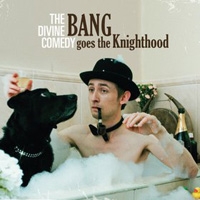 The Divine Comedy – Bang Goes the Knighthood
The Divine Comedy – Bang Goes the Knighthood
(2010; The Divine Comedy)
The Divine Comedy album that best embodies the spirit of this list, to be perfectly honest, is the 1999 greatest-hits anthology A Secret History. As for Neil Hannon’s studio albums, almost anything from Casanova onward would be a fair fit here. Personally I encourage you to legally obtain all of them, especially Fin de Siecle and Absent Friends. But the elements that constitute Bang Goes the Knighthood fit the unspoken chamber pop credo (have you guys found the credo yet?) most consistently. Hannon’s lyrical snapshots are pure portraits of British existentialism in conflict with routine, with characters from Kingsley Amis and Bill Naughton works placed in tightly rendered P.G. Wodehouse situations. The protagonist of “Down In the Street Below” drifts through civilized behavior while his sense of self recedes, but the song’s breathtaking dream sequence hints at a fuller life. The executive in “The Compleat Banker” thinks the global recession was just an accounting flub that shouldn’t reflect on his amiable nature (these days he’s surely a post-Brexit ball of fear). The career politician of the title cut fears his hushed-up dominatrix sessions might come back to, um, bite him; the lovestruck kids in “At the Indie Disco” are waking up to their feelings outside the clique; the rich young sophisticates of “Assume the Perpendicular” get their most sublime joy from jumping on the mattress, and that’s not a double-entendre. Hannon captures all these characters with as much empathy as is reasonable, and his interpretations of classic orchestral pop are a bit more intimate here. Bang Goes the Knighthood’s character studies are as thrilling as the leaden trawl toward maturity can possibly get. – Paul Pearson
Support our Site—Subscribe to Our Patreon: Become one of our monthly patrons and help support an independent media resource while gaining access to exclusive content, shirts, playlists, mixtapes and more.

